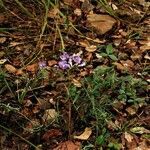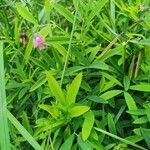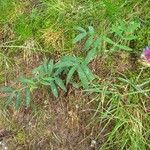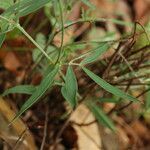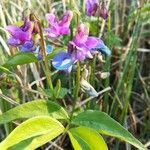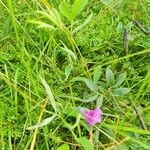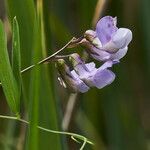Herbs perennial, 15-100 cm tall. Stem climbing, branched, pubescent or glabrous, winged or unwinged. Leaves with simple or branched tendril at apex; stipules semisagittate, 12-25(-30) × 2-10 mm; leaflets 2-4-paired, linear to broadly lanceolate, without reflexed basal spur, 30-60 × 4-10(-15) mm, pubescent, veins pinnate or subparallel, abaxially prominent. Raceme longer than leaf, (2 or)3-or 4(-10)-flowered. Calyx campanulate, unequally toothed; longest tooth equaling tube. Corolla purple, 13-15(-20) mm; standard obovate, with claw; wings shorter than standard, obovate and longer than keels. Ovary linear. Legume linear, 3-4 cm, beaked at apex. Fl. and fr. Jul-Sep.
A herb. It keeps growing from year to year. It grows 30-100 cm high. The leaves are narrow and in pairs. The flowers are purple and pea like. They are 1.3 cm long. The pods are narrow and 3-4 cm long. There is a beak at the tip.
